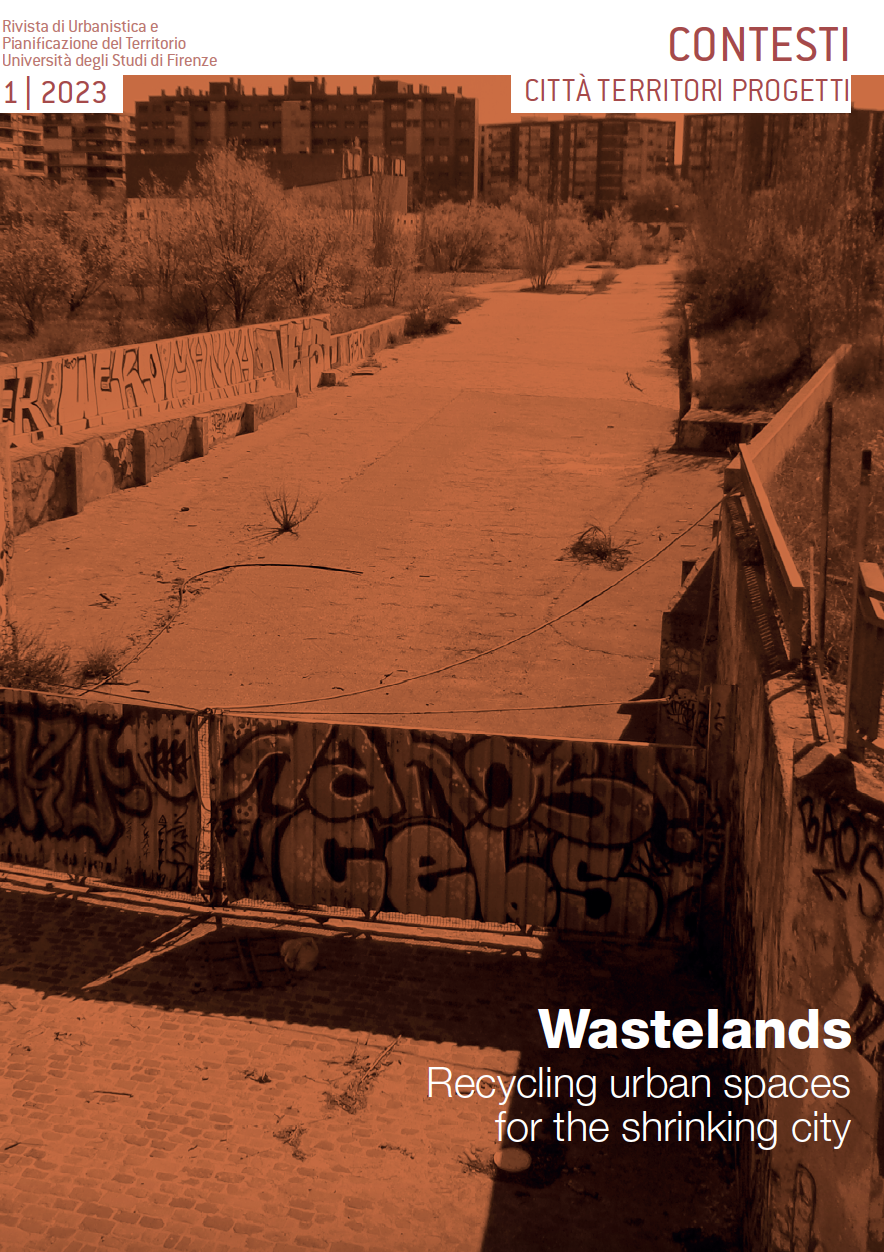Published 2023-09-12
Keywords
- wastelands,
- industrial sites,
- Greece,
- regeneration,
- Hellinikon
- Lavrio ...More
How to Cite
Copyright (c) 2023 Despina Dimelli

This work is licensed under a Creative Commons Attribution-NonCommercial 4.0 International License.
Abstract
In the context of socio-economic development and the degradation of the modern city and its inhabitant’s quality of life, the regeneration of every available urban void can lead to better urban environments. The existence of wastelands of any scale, inside and outside the urban fabric leads to urban discontinuity, disorientation and shrinking of space. In the context of the regeneration of the urban fabric and the revitalization of cities, these "dormant" spaces, present various dynamics, and possibilities through the redefinition of their identity and their reintegration into the city’s form, function, and structure.
The current paper examines with the use the case studies the regeneration process of wastelands in Greece. As wastelands integration, their new role and their implementation procedures is a subject of public discussion as the 2009 economic crisis led to new tools for their regeneration the paper with the analysis of two case studies will examine the procedures and the results of wastelands regeneration in Greece. It will evaluate the role the existing spatial planning framework and it will investigate the factors that define the processes and procedures of wastelands regeneration and their effectiveness in order to make these areas new sustainable zones in the urban tissue.
Downloads
References
- Air Traffic Safety Electronic Engineers , 2023. Athens International Airport History, s.l.: s.n.
- Acebillo, J., 2011. Helliniko, Greece, Strategic Urban Model, Phase I, Conceptualization, s.l.: s.n.
- Berger, A., 2006. Drosscape: Wasting Land Urban America. New York: Princeton Architectural Press.
- De Solà- Morales Rubiό, I., 1995. Terrain Vague. In: Anyplace. Cambridge: MIT Press, pp. 118-123.
- DZO Architecture Team, 2003. [Online]
- Available at: http://www.serero.com/index_en.htm
- [Accessed 11 02 2014].
- Foster + Partners, 2023. Ellinikon Masterplan. [Online]
- Available at: https://www.fosterandpartners.com/projects/ellinikon-masterplan/
- Grimski, D. & Ferber, U., 2001. Urban Brownfields in Europe. Land Contamination & Reclamation, pp. 143-148.
- Hellinikon SA, 2011. Hellinikon SA. [Online]
- Available at: https://web.archive.org/web/20140319124502/http://www.hellinikon.com/en/
- [Accessed 2023].
- International Olympic Committee, 2004. Official Report of the XXVIII Olympiad, v.2, s.l.: LA84 Foundation.
- Koolhaas , R., 1995. Five Cities. New York: The Monacelli Press.
- Koolhaas, R., 2002. Junkspace. JSTOR vol. 100, October,, pp. 175-190.
- Lab of Regional Planning and uban environment, 2010. Basic Planning Principles of Metropolitan Park in the former airport of Hellinikon (Volume A&B), Athens: National Technical University ofAthens.
- Lab of Regional Planning and urban environment, 1995. Development of the Hellinikon Airport-1st phase, Athens: Regulatory Planning and Environmental Protection Organization of Athens.
- Pollalis, S., 2012. Hellinikon Urban Development model, Athens: Hellinikon SA.
- UNESCO, Tentative Lists, 2014. Ancient Lavrion, s.l.: UNESCO.

